World News
1-Iran Issues Dire Warning to Israel and Defies Trump on Nukes: “We’re Ready to Strike Deep Inside”
Iranian President Masoud Pezeshkian declares military readiness for war with Israel and rejects Donald Trump’s claim that Iran’s nuclear program is finished

Tensions in the Middle East just took a sharp and dangerous turn.
In a defiant and fiery address, Iranian President Masoud Pezeshkian has warned that Iran is prepared for full-scale war with Israel if provoked, signaling one of the most direct threats in recent memory. In a report carried by Al Jazeera, Pezeshkian declared that Iran’s armed forces are ready to strike “deep inside Israel” in response to any military escalation.

“We are fully prepared for any new Israeli military move,” said Pezeshkian. “Our armed forces are ready to strike deep inside Israel again.”
The sharp rhetoric comes amid growing instability in the region and renewed concerns over Iran’s nuclear ambitions. Pezeshkian’s statement isn’t just military posturing—it’s a public message that Iran sees confrontation with Israel as imminent and potentially unavoidable.
Not Hopeful About Ceasefire
Pezeshkian expressed skepticism about the potential for a ceasefire, stating bluntly:
“We are not optimistic. That is why we have prepared ourselves for any possible scenario.”
He accused Israel of initiating harm, while asserting that Iran had retaliated, describing the situation as a balance of retribution. “Israel has harmed us, and we have also harmed it,” he said, referring to ongoing clandestine operations, cyberattacks, and proxy conflicts in Syria, Lebanon, and beyond.
This escalation comes in the wake of months of tension along the Israeli-Iranian axis, including attacks on Iranian military advisers in Syria and drone strikes targeting Israeli-linked cargo ships. Pezeshkian’s warning implies that Iran is ready to move from covert operations to direct military engagement if necessary.
Table of Contents
Nuclear Program Far From Over, Says Iran
Perhaps even more startling was Pezeshkian’s direct rejection of Donald Trump’s recent remarks that Iran’s nuclear program had been “dismantled.” Pezeshkian scoffed at the former U.S. President’s assertion, stating that Iran’s nuclear knowledge is “not in the facilities—it’s in the minds of our scientists.”
“Trump says that Iran should not have a nuclear weapon, and we accept this,” Pezeshkian said. “Because we reject nuclear weapons—this is our political, religious, humanitarian, and strategic position.”

Still, the Iranian leader left no doubt that the country’s nuclear ambitions are alive and deeply embedded within its national identity. The message was clear: Iran will not bow to Western pressure, sanctions, or threats.
Diplomacy—But Not at Any Cost
While Iran appears open to dialogue, Pezeshkian clarified that any future negotiations would need to be conducted under a “win-win” framework, without threats or ultimatums.
“We believe in diplomacy, but we will not accept threats and dictates,” he said.
This is a subtle jab at both the U.S. maximum pressure policy and Israel’s shadow war tactics. Pezeshkian is drawing a red line: Iran may sit at the negotiation table, but only on equal footing.
This positioning is a calculated move. With growing international pressure, economic sanctions, and a restless public, the Iranian regime is signaling that military defiance and diplomatic sovereignty remain its top priorities.
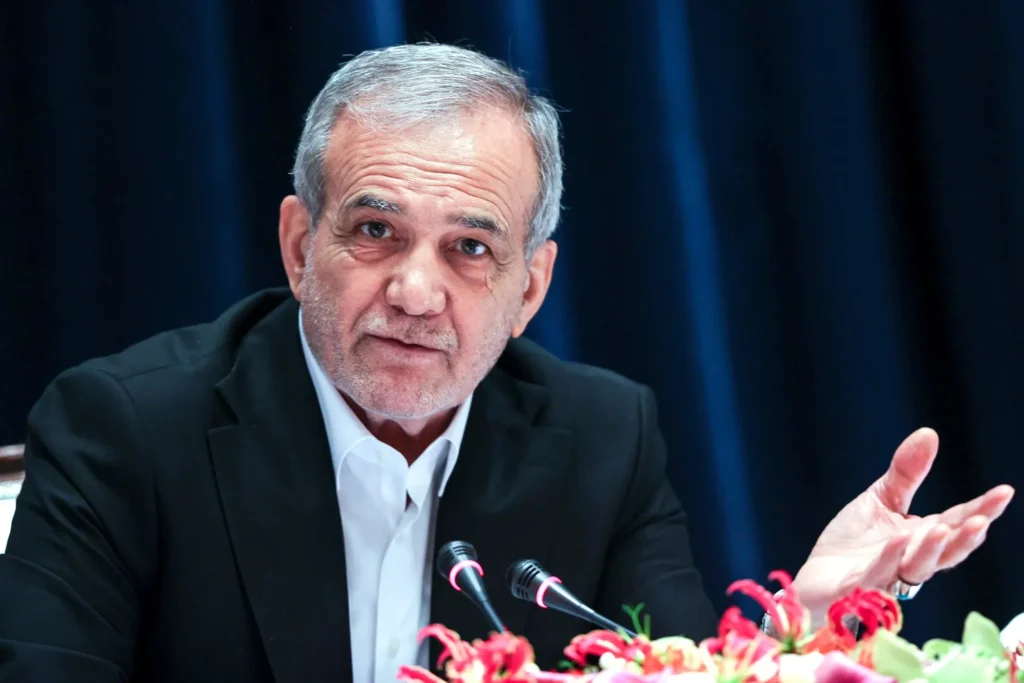
Global Reactions and the Road Ahead
International reaction has been swift and measured. The United Nations called for restraint, while European Union officials expressed concern over Iran’s aggressive posturing. Meanwhile, Israel has yet to issue a direct response, though Israeli defense sources told local media that they are “monitoring the situation very closely.”
Security analysts believe the remarks are part of Iran’s psychological warfare strategy—reminding Israel and the West that any strike will be met with overwhelming response. But others worry that such threats can quickly spiral into unintended conflict, especially with Iran-backed groups like Hezbollah already on edge in the region.
Why It Matters Now
This moment could mark a significant pivot in U.S.-Iran-Israel relations. With Trump potentially preparing for another presidential run and Congress divided on Middle East policy, Pezeshkian’s public statement is as much aimed at Washington as it is at Jerusalem.
It also highlights the deep fragility of the so-called “nuclear freeze” narrative, suggesting Iran’s program is more resilient and decentralized than ever before.
For more Update http://www.dailyglobaldiary.com
World News
Massive fire erupts at Chevron refinery near Los Angeles… residents told to stay indoors
An explosion triggered a blaze at Chevron’s El Segundo refinery, the largest on the U.S. West Coast. Officials report no injuries but warn of possible air quality impacts.
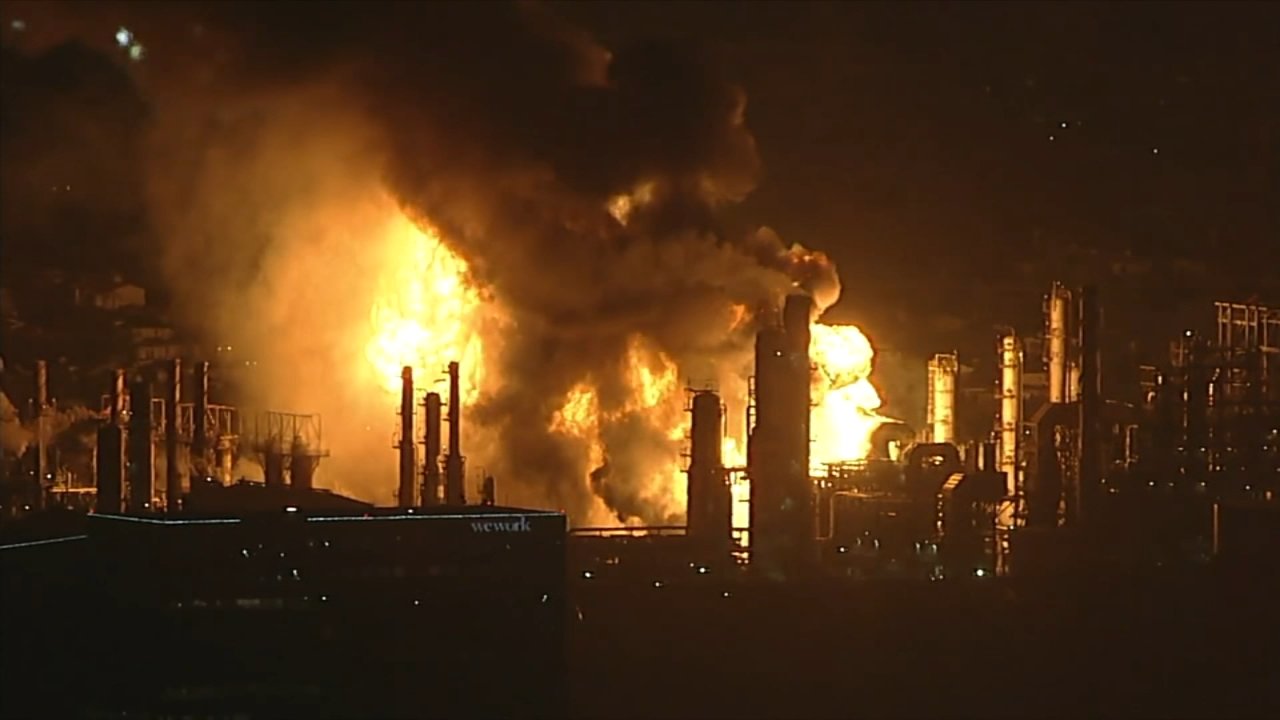
LOS ANGELES — A massive fire broke out Thursday night at the Chevron oil refinery in El Segundo, following what witnesses described as an explosion that “felt like a small earthquake.”
The El Segundo Police Department confirmed multiple emergency calls came in around the time of the blast, prompting a swift response from both local firefighters and the refinery’s in-house fire team. Crews from the Los Angeles County Fire Department and the California Governor’s Office of Emergency Services also mobilized to assist.
El Segundo Mayor Chris Pimentel said that while the fire was significant, no injuries had been reported.
“We were able to respond with Chevron fire immediately,” Pimentel told reporters. “Obviously, we are very concerned, and there is a lot of investigative work to be done.”
Fire contained but concerns remain
LA County Supervisor Holly Mitchell confirmed that crews had managed to contain the fire to one section of the refinery. She assured residents there was no need for evacuation but urged locals to remain indoors as a precaution.
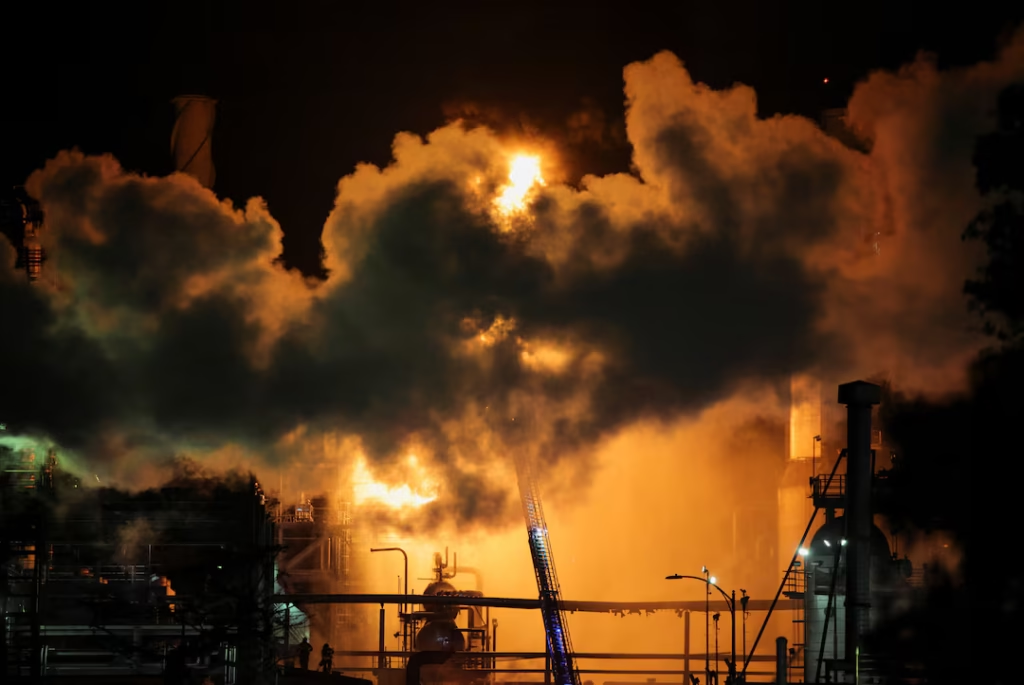
“It has been contained and there is no cause for alarm for El Segundo or the surrounding areas,” Mitchell said, while cautioning that smoke could impact air quality.
The South Coast Air Quality Management District (AQMD) noted that no elevated toxin levels were detected immediately after the blaze. Still, AQMD spokesperson Nahal Mogharabi advised residents to keep windows and doors closed if they noticed smoke or odors.
Casey Snow, Division Chief of the El Segundo Fire Department, confirmed there was no threat to nearby Manhattan Beach and that the burning materials were mostly gasoline and diesel. “The fire will either burn itself out or be extinguished with ongoing efforts,” Snow said.
A refinery of national importance
The El Segundo refinery, built in 1911, processes about 276,000 barrels of crude oil per day, making it the largest producing oil refinery on the U.S. West Coast, according to Chevron’s website.
Its proximity to Los Angeles International Airport (LAX) sparked concerns about potential flight disruptions, but LAX confirmed that operations continued without delays or cancellations.
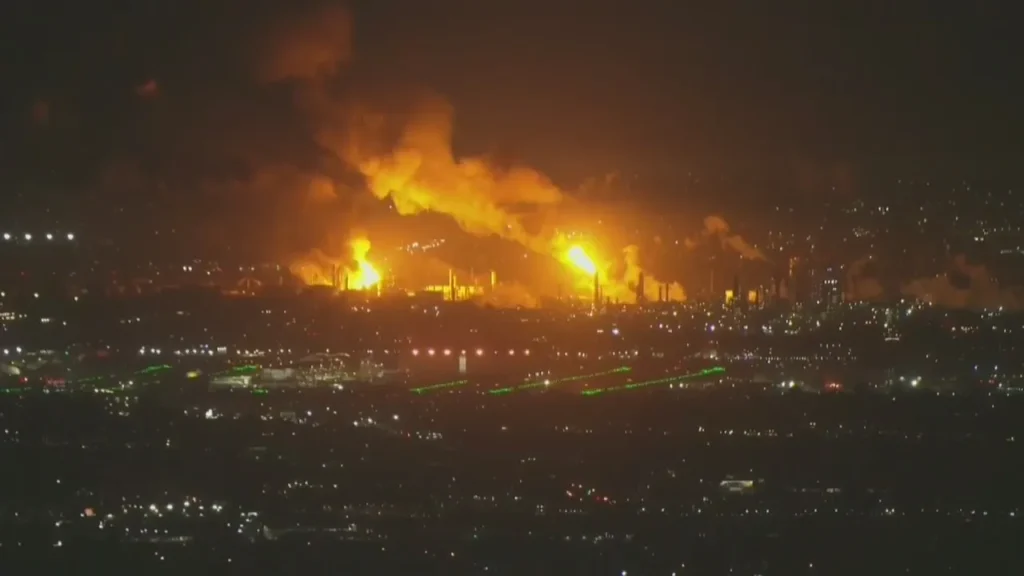
Looking ahead
While the blaze has been contained, investigators are expected to probe the cause of the explosion. This is not the first time Chevron has faced refinery-related incidents; the company has previously been criticized over safety lapses at facilities in Richmond, California, and abroad.
For El Segundo residents, the immediate priority is safety. Officials stress that while there is no imminent danger, smoke-related conditions could shift quickly.
As the refinery’s gasoline and diesel flames die down, questions will linger about what caused the explosion at one of California’s most critical energy hubs — and whether it could have been prevented.
For more Update http://www.dailyglobaldiary.com
World News
Philippines rocked by 6.9 magnitude earthquake as Cebu declares state of calamity and death toll rises to 69…
The devastating quake struck just days after back-to-back typhoons, leaving thousands homeless and rescue teams racing against time.
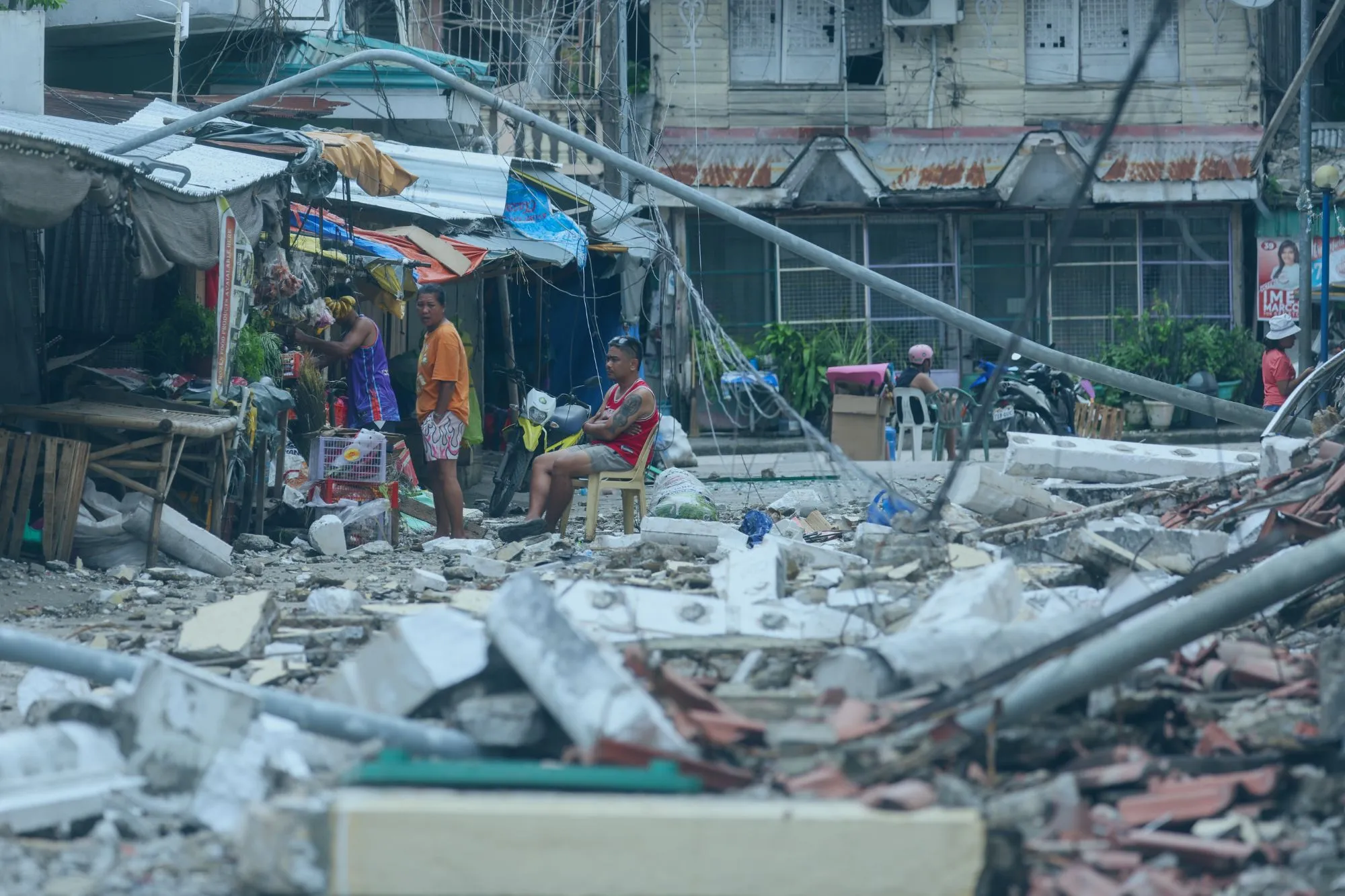
A powerful 6.9 magnitude earthquake shook the central Philippines late Tuesday night, killing at least 69 people and injuring dozens more. The hardest-hit province, Cebu, declared a state of calamity early Wednesday as repeated aftershocks sent terrified families into the streets and crippled basic services.
“Children were crying… people were traumatised”
Eyewitnesses described harrowing scenes. One Cebu resident told the BBC he spent the night outside after power and water lines were cut, adding: “You could hear the voices of crying children everywhere. They were traumatised.”
The earthquake comes barely a week after the Philippines endured two successive typhoons, which claimed more than a dozen lives and displaced hundreds of thousands. The dual disasters have stretched emergency services thin in one of the world’s most disaster-prone nations.
Bogo city bears the brunt
Most victims were from Bogo city, a small town in the Visayas Islands near the quake’s epicentre. Shocking images showed cadaver bags lined along the streets while makeshift hospitals treated hundreds of wounded in tents. Officials warned of “a lot of damage,” noting that roads buckled, bridges collapsed, and power lines fell, complicating rescue and relief operations.
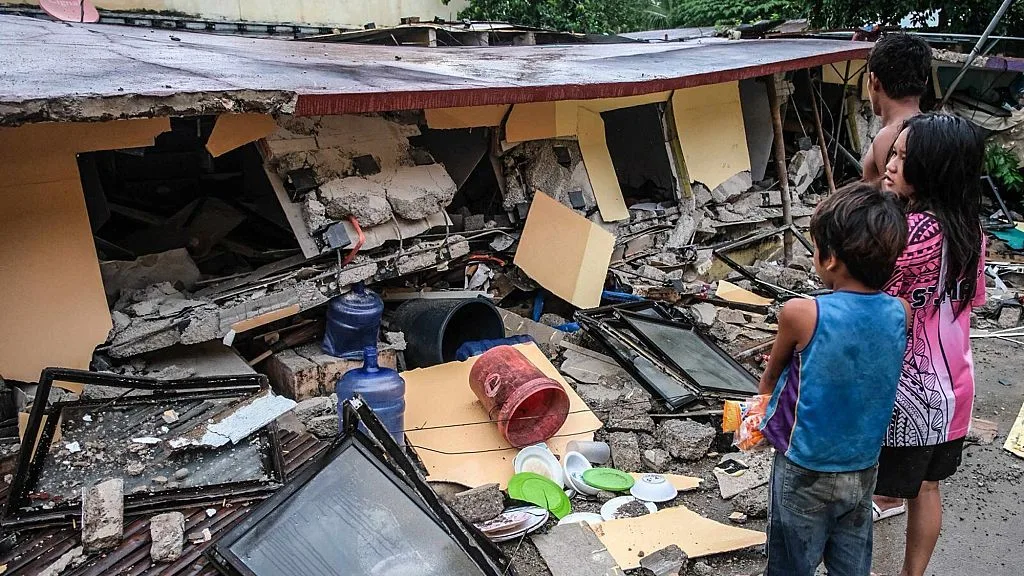
Tragically, seven of the victims were living in a housing village originally built for survivors of Typhoon Haiyan—the 2013 superstorm that killed more than 6,000 people.
Disaster strikes during daily life
In San Remigio, the quake struck while a basketball game was underway, sending panic through the crowd. Nearly 20 people were injured, and at least one later died from their injuries, officials confirmed.
As aftershocks rattled the province—including a 4.7 tremor on Wednesday evening—rescue officials prioritised restoring electricity, clearing debris, and rushing relief goods to stranded residents.
Churches and heritage sites at risk
The archbishop of Cebu urged Catholics to stay away from churches until safety assessments are completed. This warning is particularly significant in Cebu, home to centuries-old churches dating back to the 1500s Spanish colonisation. Footage captured the dramatic collapse of a church tower in one locality.
A nation at the mercy of nature
The Philippines’ vulnerability to natural disasters stems from its geography. Located on the volatile Pacific “Ring of Fire”, the nation is prone to frequent earthquakes and volcanic eruptions. Its position along typhoon tracks makes it equally exposed to devastating storms.
Just last month, Tropical Storm Bualoi and Typhoon Ragasa struck, killing over a dozen people and forcing mass evacuations.

The road ahead
Officials warn that casualty numbers could rise further as many regions remain cut off. The National Disaster Risk Reduction and Management Council (NDRRMC) in Manila is tasked with confirming figures, but their checks are slow and rigorous.
For now, thousands in Cebu and nearby Leyte islands remain without shelter, food, or clean water. Local authorities have appealed for doctors, nurses, and volunteers as the nation braces itself for yet another test of resilience.
For more Update http://www.dailyglobaldiary.com
World News
Thailand Sinkhole 50 Meters Deep Shocks Bangkok Residents near Vajira Hospital
Authorities race to stabilize ground collapse in central Bangkok as traffic, power, and utilities face major disruption.
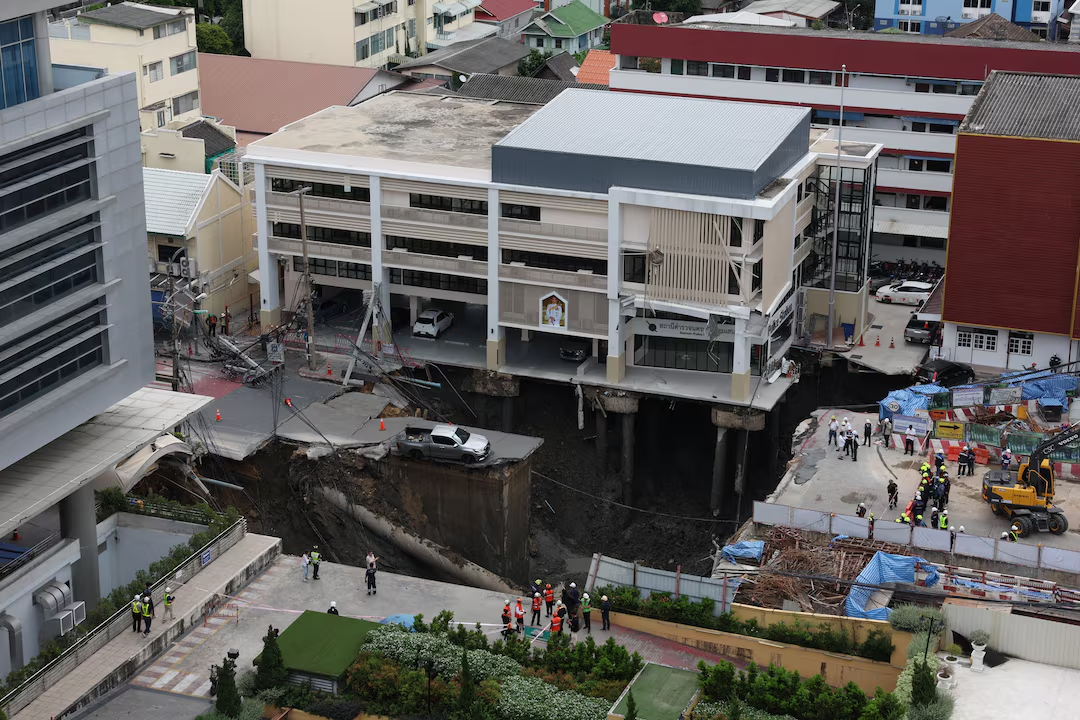
A massive sinkhole opened up in the heart of Bangkok on Wednesday, sparking chaos, evacuations, and emergency operations. The incident occurred in front of the Vajira Hospital on Samsen Road, leaving residents stunned as footage of the ground caving in spread across social media.
According to Thai officials, the sinkhole measured about 50 meters deep (164 feet) and spread across nearly 900 square meters. The collapse dragged down electricity poles and ruptured a drainage pipe, causing water to gush uncontrollably and further weaken the surrounding area. Traffic around the hospital came to a grinding halt as authorities cordoned off the zone to prevent further casualties.
Prime Minister Reacts
Anutin Charnvirakul, the Prime Minister of Thailand, arrived at the site to assess the situation. Addressing reporters, he said:
“Dirt from an underground train construction was sliding in. Luckily there are no deaths or injuries.”
The statement provided relief to residents already concerned about the safety of patients at Vajira Hospital and nearby establishments.
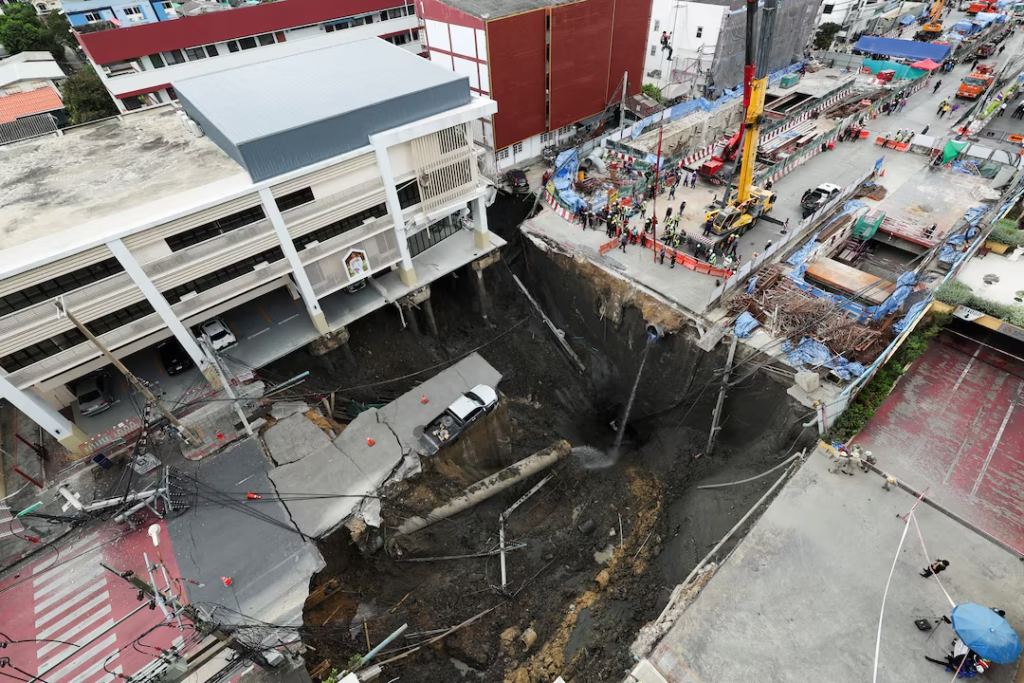
Governor Orders Emergency Measures
Chadchart Sittipunt, the Governor of Bangkok, confirmed that the sinkhole damaged underground infrastructure, cutting off both water and power lines.
“The hospital has no problems, but we are worried about the police station: that’s still dangerous and the public has been evacuated,” he explained.
Authorities moved quickly to ensure the hospital had backup systems in place, though the hospital temporarily suspended new admissions to ensure safety.
Eyewitness Accounts
Residents who witnessed the collapse described the scene as surreal. One local said the road “sank like quicksand” as the drainage system failed. Others filmed dramatic moments where poles and debris vanished into the widening hole.
Social media platforms lit up with hashtags about the Bangkok sinkhole, with many expressing gratitude that no lives were lost.
Possible Cause
Preliminary investigations point to underground train construction as a likely cause. Loose soil combined with pipe leakage created conditions for the ground to cave in. Experts note that Bangkok’s geology, with its layers of soft clay, makes it particularly vulnerable to such collapses when heavy infrastructure is built without reinforced protections.
Past Sinkhole Incidents
This is not the first time Thailand has faced sinkhole scares. Similar incidents, though smaller, have been reported in provinces like Chiang Mai and Nakhon Ratchasima. However, the scale of this Bangkok collapse is among the largest in recent memory.
Authorities’ Response
Sinkholes are not unique to Thailand. Countries such as China, United States, and Mexico have all battled devastating sinkholes in urban areas, often linked to underground construction and aging drainage systems.
By noon, Thai authorities reported that ground movement had been halted. Engineers were closely monitoring the site, while rescue teams stood by in case the collapse extended. Heavy machinery has been deployed to stabilize the soil, and barricades have been set up to prevent onlookers from venturing too close.
Governor Sittipunt emphasized that long-term solutions would involve reinforcing the underground train project and overhauling drainage networks to prevent repeat incidents.
Broader Impact
The sinkhole disrupted not only traffic but also emergency services. With a police station in the vicinity under threat, officials rushed to relocate staff and important documents. Meanwhile, commuters faced hours-long delays, and businesses near Vajira Hospital were forced to close temporarily.
Urban planning experts argue that Bangkok must rethink its infrastructure resilience. With rising rainfall due to climate change, the city’s already fragile drainage system is under enormous stress. Events like this underline the urgency for preventive action rather than reactive measures.
Conclusion
The Bangkok sinkhole has served as a wake-up call for Thai authorities and urban planners. While no lives were lost, the risks remain high until the site is fully secured. For residents, the terrifying images of the ground opening beneath one of the busiest roads in the capital will not be forgotten anytime soon.
Stay updated on this developing story at Daily Global Diary, where we bring you real-time global news and analysis.
-

 Entertainment1 week ago
Entertainment1 week agoAlyssa Milano removes breast implants says she finally feels free and authentic
-

 Sports1 week ago
Sports1 week agoSeattle Mariners end 24 year drought as Cal Raleigh belts No 60 to clinch AL West crown
-

 Sports1 week ago
Sports1 week agoLionel Messi scores twice with assist as Inter Miami crushes New York City FC fans stunned by his masterclass
-

 Technology News1 week ago
Technology News1 week agoChina opens Shanghai digital yuan hub to rival US dollar but here’s the bigger plan
-

 Entertainment5 days ago
Entertainment5 days agoDolly Parton delays Las Vegas concerts by nine months citing health challenges but promises unforgettable return
-

 Politics1 week ago
Politics1 week agoUS Senate to grill Coinbase executive as crypto tax fight heats up next week
-

 Entertainment1 week ago
Entertainment1 week agoScarlett Johansson breaks silence on Colin Jost’s SNL future fans surprised by her answer
-

 Sports1 week ago
Sports1 week agoSnoop Dogg stuns AFL fans with 5 bold promises before grand final show












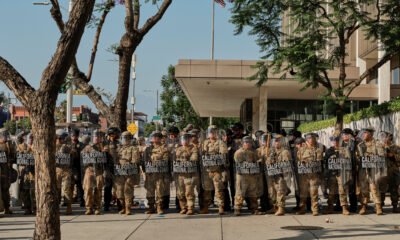
















superph11
August 16, 2025 at 6:35 AM
Roulette’s randomness is fascinating – the math behind it is truly elegant! Seeing platforms like superph11 app cater to local preferences with options like GCash is smart. It’s about more than just games; it’s community & convenience!